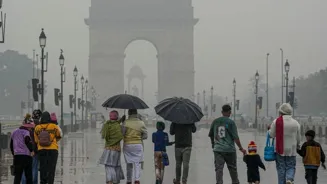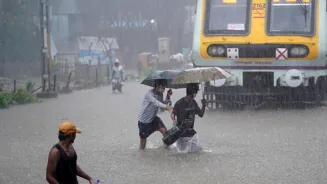Chandigarh [India], August 14 (ANI): The India Meteorological Department’s (IMD) Meteorological Centre in Chandigarh has reported a week of varied weather activity across Punjab and Haryana, marked by
thunderstorms, heavy rainfall in isolated areas, and fluctuating temperatures due to prevailing monsoon systems. The monsoon trough at mean sea level extended from Bikaner to the low-pressure area over the northwest and adjoining west-central Bay of Bengal and the South Odisha-North Andhra Pradesh coasts. An upper air cyclonic circulation persisted over Punjab and its neighbourhood up to 1.5 km above mean sea level, while another over West Uttar Pradesh was observed at 0.9 km. The cyclonic circulation over south Haryana and adjoining north Rajasthan became less marked during the week. In Punjab, maximum temperatures mostly remained near normal, while minimum temperatures showed slight variations. Rainfall patterns ranged from isolated showers to widespread rainfall on certain days, with heavy to very heavy rain reported in isolated pockets. Chandigarh recorded the highest weekly rainfall at 143.1 mm, followed by significant precipitation in Pathankot (183.9 mm) and Hoshiarpur (106 mm). Cumulative rainfall from June 1 to August 14 stood at 301.3 mm for Punjab, marginally below normal. Haryana experienced similar synoptic conditions with isolated to widespread rainfall events. Chandigarh (shared between Punjab and Haryana for weather reporting) again topped the chart with 143.1 mm, while Karnal saw 73.4 mm and Ambala 30.5 mm. Notably, Nuh recorded a 105% excess in cumulative rainfall since June, while Palwal and Mahendragarh also reported significant surpluses. Statewide cumulative rainfall from June 1 to August 14 reached 352.4 mm, which is 37% below the normal average for this period. Thunderstorms and lightning occurred at several locations in both states during the week. Heavy rainfall events were confined to isolated areas but had a notable localised impact. The IMD continues to monitor the evolving monsoon pattern, which remains active in parts of northwestern India. (ANI)
















